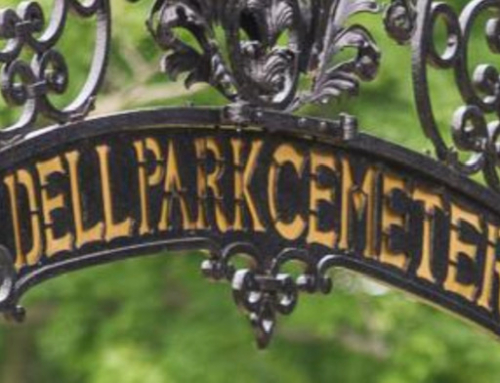In the decades that preceded the American Civil War a new model of community burial ground became popular. Begun by the Mount Auburn Cemetery in Cambridge, Massachusetts in 1831, the movement spread throughout the east coast. Taking the burial ground out of the center of the community and establishing a park-like area for walks and quiet contemplation accorded well with evolving attitudes toward urban vs. rural living, and the sacred vs. the secular. The carefully laid out landscapes combined burial spaces for the dead that were used regularly by the living. They are regarded by many as important precursors of the city parks and public recreational spaces.
Influence of the picturesque, rural cemetery movement
The need for burial grounds away from the town center of Natick had become a accute by the late 1840s. Space in the town center as well as in the center of South Natick, was at a premium and existing burial grounds were reaching capacity. In April 1849 the town approved the purchase of twelve acres of land to be used as a town burial ground. The grounds were laid out by a committee, and “on the 8th day of July, 1849, the citizens of the place assembled to consecrate it and set it apart as a cemetery.” [Bacon, p. 112]
Following an invocation by Rev. Alfred Greenwood, the Rev. Samuel Hunt of the First Church delivered an address in which he called attention to the changing tastes which led to the creation of “extensive tracts of land, picturesque in scenery and presenting an agreeable diversity of prospect, to be fitted up as ornamental burying grounds…as cemeteries, or…places of rest for all coming time.” In this regard, Dell Park was following the example of the Mount Auburn Cemetery in Cambridge (est. 1831), the first of the pastoral cemeteries, modeled on utopian ideals, as well as the Greenwood Cemetery in New York, and Laurel Hill in Philadelphia.
The Natick Observer of June 8, 1861 carried this note:
Dell Park Cemetery, situated about half a mile to the south-west of Natick Centre, is becoming an object of interest, apart from the purpose to which is it dedicated. The natural contour of the ground, considering the smallness of the lot, is remarkably various, affording elevations and depressions, shade trees and open space, to suit the taste of the most fastidious admirer of natural beauty. The water prospect too, from this enchanting spot “is altogether lovely,” embracing a view of Dug Pond and a considerable portion of Lake Cochituate; while the greater portion of the village and of Felchville is spread out like a map before the observer. [accessed 11/5/22]
For more information on the history of the rural cemetery movement you may find these sources of interest:
-
- Smith, Jeffrey (2017). The Rural Cemetery Movement: Places of Paradox in Nineteenth Century America.
- Greenfield, Rebecca (16 March 2011). “Our First Public Parks: The Forgotten History of Cemeteries”. U.S. The Atlantic.





